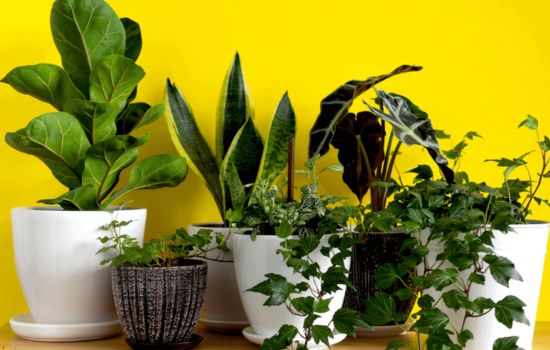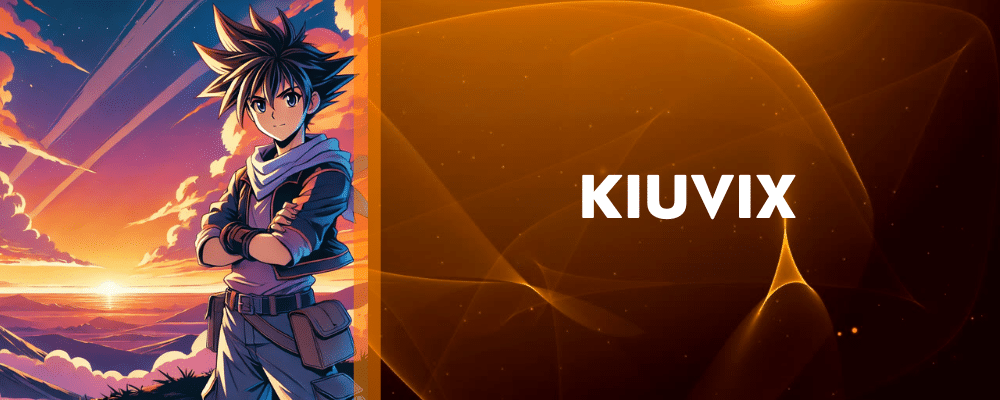Advertisements
Did you know that each plant is a miniature chemical laboratory?
As you wander idly down the street, you pass by biological factories producing compounds more sophisticated than any pharmaceutical industry. Natural antibiotics, powerful antioxidants, neurotransmitters, painkillers... all silently manufactured by green leaves.
For millennia, humanity depended on this living pharmacy.
But we lost the keys to the lab. We forgot the access codes. We no longer know how to read the labels of these natural medicines that literally grow under our feet.
Advertisements
See also
- What if traveling doesn't require selling a kidney?
- Remember when tuning into the radio was quite an adventure?
- What do an astronaut and a radio listener have in common?
- Measure like a pro with your smartphone
- The Final Verdict on Your IQ, on Your Smartphone
Modern alchemy is in your hands
The ancient alchemists dreamed of transforming base metals into gold.
Advertisements
Today's digital alchemists have achieved something more valuable: transform ignorance into wisdom with a simple photograph.
Your smartphone has become the philosopher's stone that medieval alchemists have sought for centuries.
Digital transmutation
Raw material: A blurry photo of an unknown plant
Process: Artificial intelligence algorithms
Result: Instant ancestral knowledge about chemical properties, medicinal uses, and evolutionary secrets
It is magic indistinguishable from advanced technology.
The three great masters of plant alchemy
In this universe of digital botanical transmutation, three great alchemists have perfected their formulas:
PictureThis – The Commercial Alchemist
If you need fast, accurate results, PictureThis is your personal master alchemist.
It not only identifies the plant, but also reveals all its chemical and biological secrets with the precision of a laboratory analysis.
His grimoire includes:
- Instant identification formulas for 17,000+ species
- Specific care recipes according to the chemical composition of the plant
- Plant health diagnostics at the molecular level
- Transmutation of diseased plants into healthy specimens
It's like having a phytochemistry lab in your pocket.
PlantNet – The Academic Alchemist
For purists of botanical science, PlantNet represents the finest alchemy.
Developed in the digital faculties of European universities, this system maintains the tradition of absolute scientific rigor.
Its hermetic methodology:
- Identification processes verified by the oldest herbaria in the world
- Transmutation of observations into pure scientific knowledge
- Collaboration with the great contemporary botanical masters
- Free access to knowledge (true alchemical philosophy)
It is the academic version of the botanical philosopher's stone.
iNaturalist – The great alchemical collective
This is where individual alchemy is transformed into great collective work.
iNaturalist has created the most powerful network of alchemists in history: millions of practitioners collaborating in the great transmutation of planetary knowledge.
Their collective power:
- Global network of masters and apprentices exchanging secrets
- Planetary laboratory where every observation feeds collective wisdom
- Transmutation of individual curiosity into real scientific breakthroughs
- The social philosopher's stone: knowledge that multiplies when shared
The secret codes you will learn to decipher
Each plant has a name inscribed in its structure. complex chemical formula which reveals its hidden properties:
The language of forms
Fleshy and waxy leaves → Adaptations to conserve water in arid environments
Thorns and stinging hairs → Factories of toxic defensive compounds
Showy and aromatic flowers → Essential oils and nectar laboratories
Colorful fruits → Concentrators of antioxidants and vitamins
The hidden chemistry in colors
Deep red → Anthocyanins (powerful antioxidants)
Vibrant green → Chlorophyll (detoxifying potential)
Bright yellow → Carotenoids (precursors of vitamin A)
Deep purple → Flavonoids (natural anti-inflammatories)
Each color is a chemical signature specific.
The experiments that will change your perspective
Once you start identifying plants chemically, the world becomes an endless laboratory of experimentation:
The Pharmaceutical Garden Experiment
Document all the medicinal plants within a 500-meter radius of your home. You'll be surprised to discover you have a complete pharmacy within a short walk.
Typical result:
- 15-30 species with documented medicinal properties
- 5-10 nutritious edible plants
- 3-5 aromatic spices with essential oils
- 2-3 dye plants for natural dyes
The Seasonal Chemistry Experiment
The same plant produces different chemical compounds depending on the season. Document a species for 12 months and observe how its "chemical profile" changes.
The plant stress experiment
Plants of the same species under different stress conditions (drought, shade, poor soil) develop varying concentrations of active compounds.
The industrial secrets that plants perfected first
The modern chemical industry is nothing more than a crude attempt to imitate processes that plants mastered millions of years ago:
Plant nanotechnology
The leaves produce wax nanoparticles that create superhydrophobic surfaces. Industry is trying to copy this to create waterproof fabrics.
Organic semiconductors
Photosynthesis is the most efficient energy conversion system known. Solar panels are primitive imitations.
Perfect green chemistry
Plants produce complex compounds at room temperature, using only water, CO2, and sunlight. No toxic waste, no high pressures, no extreme temperatures.
They are the most efficient chemicals on the planet.
The lost recipes that are resurfacing
Digital identification is revealing traditional chemical knowledge that was thought to be lost forever:
Forgotten natural antibiotics
Plants that indigenous peoples used to combat infections are now being studied by the pharmaceutical industry to combat bacteria resistant to modern antibiotics.
Ancestral neuroprotectors
Spices traditionally used to “improve memory” contain compounds that modern neuroscience is investigating to treat Alzheimer's.
Adaptogens rediscovered
Plants that traditional cultures used to “boost resistance” are now recognized as sources of compounds that help the body manage stress.
The dangers of the alchemist's apprentice
As in any laboratory, working with chemically active plants requires precautions:
The “natural = safe” fallacy
Some of the most lethal substances on the planet are completely natural. Misidentification can be literally fatal.
The self-dosing syndrome
Knowing the properties of a plant doesn't automatically make you a qualified herbalist. Dosage requires years of study.
Modern chemical pollution
Plants growing in polluted environments can concentrate heavy metals and other toxins in their tissues.
The revolution of personal chemistry
The future promises even more sophisticated tools for the digital alchemist:
Portable spectrometers
Smartphone-sized devices that analyze the exact chemical composition of any plant in real time.
Custom biosensors
Systems that analyze your genetic profile and recommend specific plants based on your individual biochemistry.
Home synthesis laboratories
Molecular printers that extract and concentrate specific compounds from identified plants.
Chemical augmented reality
Cameras that show the “chemical aura” of plants: real-time visualization of active compounds.
The responsible alchemist's protocol
If you're going to explore plant chemistry, follow these golden rules:
Rule 1: Triple identification
Never rely on a single app for plants with significant chemical properties. Check with at least three independent sources.
Rule 2: Thorough research
Learn not only what compounds a plant contains, but also its contraindications, interactions, and safe dosages.
Rule 3: Consult with experts
For any use beyond academic curiosity, consult with herbalists, pharmacists, or specialized physicians.
Rule 4: Rigorous documentation
Keep detailed records of your observations and experiments to contribute to the collective knowledge.
The personal transmutation you will experience
When you start seeing plants as chemical laboratories, your relationship with the natural world is completely transformed:
You develop “molecular vision”
You begin to “see” invisible chemical processes: active photosynthesis, production of essential oils, synthesis of defensive compounds.
You acquire biochemical intuition
Your nose becomes more sensitive to aromatic compounds. You can detect medicinal plants by their specific scent.
You awaken the “chemical sixth sense”
Some plants produce volatile compounds that subtly affect your mood. You begin to notice these influences.
The big secret that changed my life
Two years ago, I photographed a “common” plant in my garden using PictureThis. It turned out to be Plantago major, a species he had been treading on for decades without knowing it contained potent anti-inflammatory compounds.
That identification sparked an obsession: I turned my house into a homemade plant chemistry lab.
I discovered I had a whole pharmacy growing like “weeds.”
I now view every hike as a chemical prospecting expedition. Every plant represents a potential discovery of new bioactive compounds.

Conclusion
Right now, as you read these words, you are surrounded by miniature chemical laboratories that have been perfecting their formulas for millions of years.
Each leaf synthesizes compounds more sophisticated than any pharmaceutical laboratory. Each flower produces chemical combinations that would make even the most experienced perfumers pale with envy.
Apps like PictureThis, PlantNet, and iNaturalist aren't just identification tools. They're master keys which open the doors to the most advanced and distributed chemical laboratory on the planet.
Digital alchemy allows you to instantly access knowledge that previously required decades of academic study. You can identify not only species, but also understand their chemical secrets, traditional applications, and future potential.
Your transformation from passive observer to active digital alchemist begins with a single photograph.
The world's most sophisticated laboratory is literally growing beneath your feet, waiting for someone like you to take the time to decipher its secret formulas.
Your first botanical transmutation is just an identification away.
21st-century alchemy does not seek to turn lead into gold.
Seeks to convert ignorance into wisdom.




